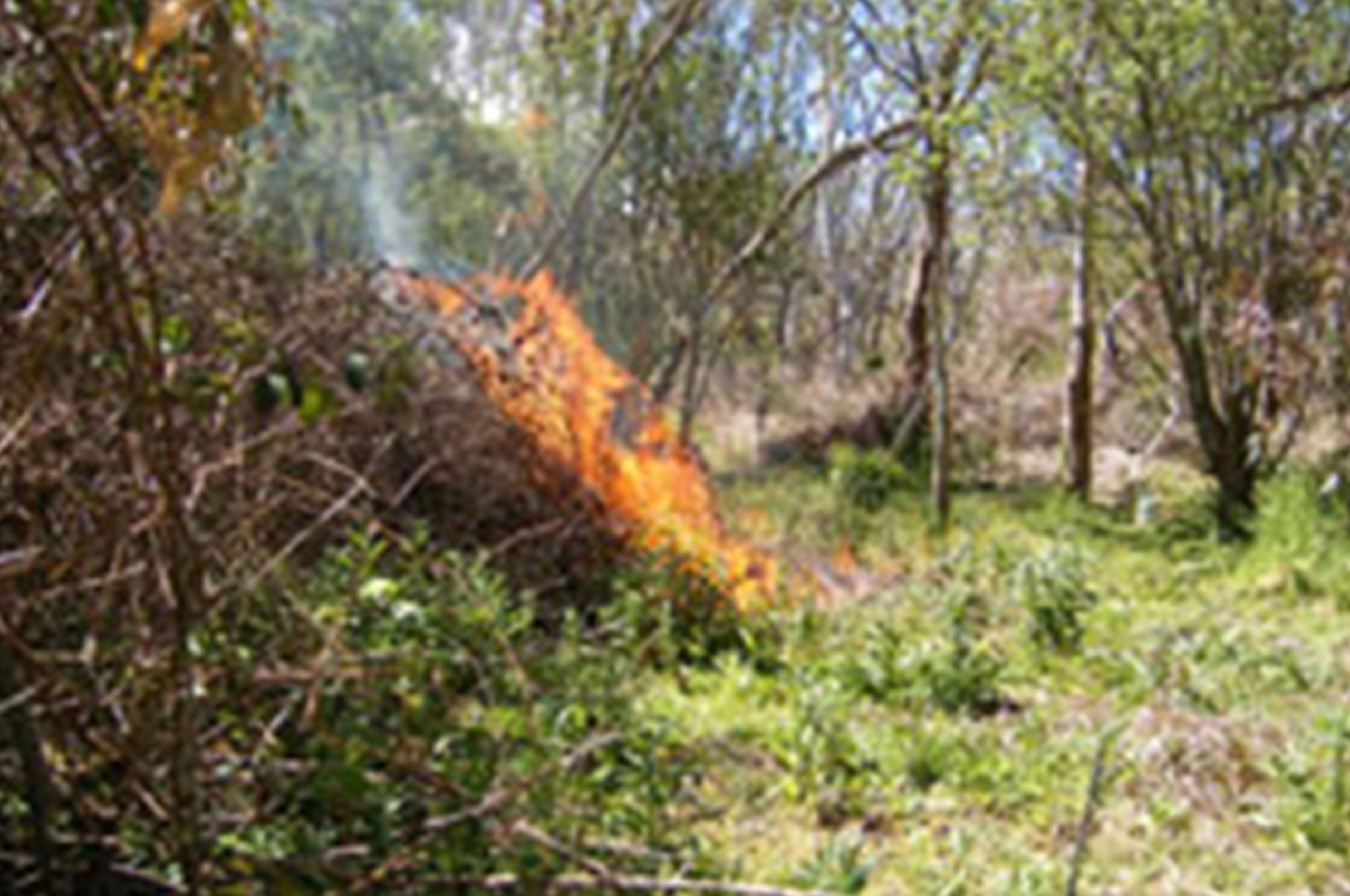Land management

The Wildlife Sanctuary was set up in 1967 as a project in the restoration and management of indigenous flora and fauna.
The Gresswell Forest Nature Conservation Reserve sits just to the North East of the Sanctuary. The previous site of the Mont Park Hospital, this land came under the management of La Trobe University in 1978.
Through the efforts of Sanctuary staff and many volunteers, this area has become a beautiful forest and natural habitat reserve which the public can access (no bikes or dogs allowed). Although, from 2012, the Reserve is no longer under the management of the Wildlife Sanctuary, we continue to work with Parks Victoria to help in activities such as restricting feral animals and back burning before bushfire season.
Land Management staff routinely assist in ensuring public safety within the Sanctuary and associated external perimeter areas by:
- identifying and reporting any risks such as damaged infrastructure, signage, potential pollutants and health hazard
- regularly reporting and removing waste or hazardous materials or illegally dumped rubbish from waterways and terrestrial areas with the assistance of the Conservation Volunteers Australia
- undertaking fire protection measures in an environmentally sensitive manner such as the reduction of fuel loads and biomass, the maintenance of fire breaks and access tracks for emergency services
- providing a safe, non-discriminatory workplace for staff, students, and volunteers that embodies La Trobe University’s work ethic.
Land Management staff, with the assistance of student and community volunteers, are engaged in the protection, management, and enhancement of the cultural heritage, threatened ecosystems, vegetation, wetlands, wildlife habitat, and infrastructure. The Sanctuary was established for the purpose of restoration and management of indigenous flora and fauna for research and education purposes but is also utilised for its recreational values and broader community engagement.
The Sanctuary preserves cultural heritage by managing in situ Indigenous and historical cultural materials. This includes a small Aboriginal surface artefact scatter comprised of artefacts including cores, flakes and angular fragments. The Sanctuary’s ecology is largely modified from original condition (pre-European occupation) through a long site history of agricultural land use (Strathallan Estate), and then by use as the grounds of Mont Park Hospital Farm including a cricket ground, tennis court and croquet lawn, followed by earthworks and drainage modifications associated with the several constructed wetlands as part of the Sanctuary. Some relics from the sites prior use are preserved for archaeological investigation and as a record of site-use history.
The Sanctuary is protected under a Trust for Nature Conservation Covenant to permanently conserve and protect the natural, cultural or scientific values of the reserve. Its remnant vegetation cover includes significant fragments of threatened Grassy Eucalypt Woodland which are among the most under-represented ecosystems in Australia’s conservation estate. These woodlands are recognised nationally as among the most threatened vegetation types, and represent some of Victoria’s most threatened and fragmented ecosystems. Remnants persist in mainly small, isolated patches less than 10 hectares in size following large scale clearing for agriculture and are subject to continuing clearance for development and other threats from urbanisation. Less than 5% of the original extent of Natural Temperate Woodland and Grassy Eucalypt Woodland remains, with higher quality remnants estimated at less than 1%. These ecological communities often require recovery efforts because they are so degraded, due to a range of threats such as weed and feral animal invasion and loss of native biodiversity, resulting in a significantly reduced capacity to maintain ecosystem function.
These protected ecosystems persist in association with other remnant ecological communities, reconstructed wetlands and novel ecosystems within the Sanctuary and La Trobe University. The reserve system has an important role within the broader network of conservation reserves and eco-corridors in the Greater Melbourne Region being inhabited by numerous indigenous species, many of which are locally or regionally threatened.
Compliance with a range of federal and state government legislation and the obligations of the conservation conservancy are an important aspect of Land Management which ensures the protection of threatened species and that actions like threat mitigation prioritises listed invasive species and listed potentially threatening processes such as the loss of coarse woody debris from Victorian woodlands. Since the establishment of the Sanctuary, there has been an extensive program of invasive plant and pest species eradication coinciding with the reestablishment of indigenous species, the establishment of buffer zones, and the restoration or reconstruction of the areas indigenous ecological communities. A predator-proof fence is routinely inspected and maintained as a preventative barrier to feral animals.
La Trobe University Student Volunteers have assisted Land Management Staff in a range of works that contribute to the preservation and enhancement of the Sanctuary’s biodiversity values. Volunteer students are currently engaged in botanical identification primarily for the purpose of identifying priority invasive species and remnant Grassy Woodland species assemblages, mapping for Geographic Information Systems to record the location of threatened species for planning and monitoring, invasive species mapping and control, and threatened species reintroductions.
